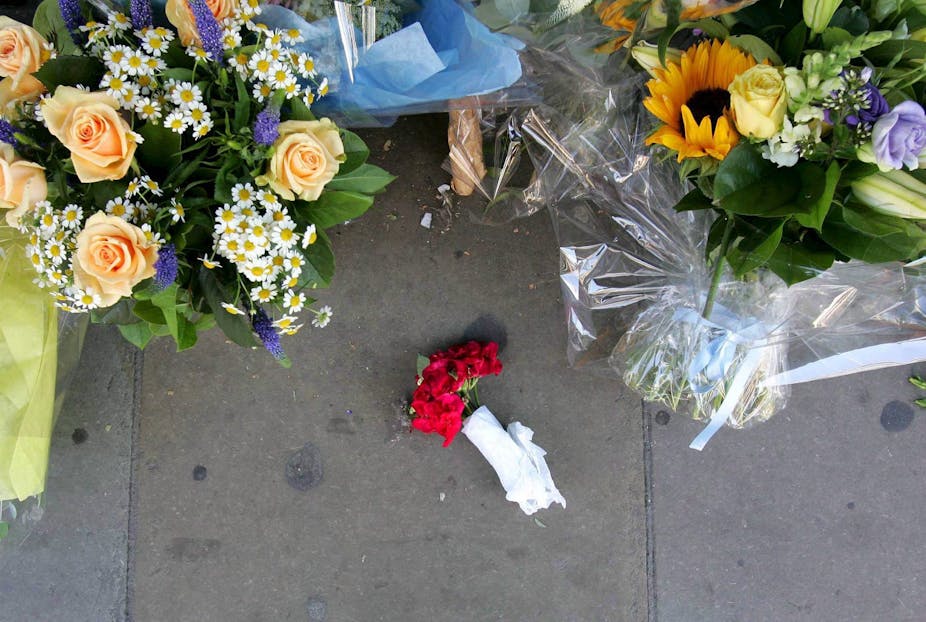Media stories about crime and grief often centre on the concept of “closure”. It’s assumed families affected by crime or loss need to achieve closure and can’t begin the grieving process until the perpetrator is found, or punished, or the truth is known.
But is closure really an essential part of the grieving process? Or has it become a buzz word used indiscriminately in the reporting of tragedy and loss?
The exact origins of using closure in relation to loss are unclear. It may have come from the medical concept of closure – the healing of a wound.
Some suggest it comes from Gestalt psychology, describing our human tendency to perceive things as a whole and to “fill in gaps” to make sense of something incomplete.
Or the idea of closure may have developed from grief theory, with some experts viewing acceptance as the desired outcome of grief and a necessary step to be achieved before moving on.
All three possibilities contribute to our understanding of closure: those dealing with loss do seek some kind of healing, completeness and acceptance.
But other experts reject the concept, arguing it sets false expectations for grievers who feel they have to achieve closure to “effectively” deal with their loss.
Not the end of grief
For much of the 20th century, loss and grief experts believed the goal of the grief process was to cut off psychological ties with the lost person or thing, to let go and move on with life. The bereaved were expected to “say goodbye”, “get back to normal”, or “start a new life”.
But over time we learnt this didn’t reflect how grievers felt. Instead, they wanted to stay connected with the person they lost, as well as rebuild their life.
Today, the concept of continuing bonds is used to more accurately describe the enduring connection grievers seek with their lost loved one. So, in referring to closure, we risk perpetuating the idea that there’s a specific end point to grief.
A painful step forward
Closure can imply the griever’s need for support is over and that it’s time to move on. But the milestones that are assumed to give closure – such as sentencing an offender, uncovering the details of an accident or finding the remains of a missing loved one – can renew the griever’s need for support.
In grief therapist William Worden’s Four Tasks of Grieving theory, the first is acceptance of the reality of loss. Achieving some kind of closure – however it might occur – can assist a grieving person or family come to grips with the reality of what has happened and what the actual loss is.
Worden’s second task is to process the pain of grief. So rather than being the end, closure instead can enable a step forward in the grieving process, but it’s likely to be filled with intensified feelings that warrant extra support from loved ones and helpers.
Closure and ambiguous loss
The idea of closure is particularly relevant to one type of grief experience, known as ambiguous loss. This can manifest in two ways:
(1) When the person is physically absent but psychologically present – such as unexplained disappearances, soldiers missing in action and children relinquished for adoption.
(2) When the person is physically present but psychologically absent – such as persons “lost” to dementia, mental illness, substance abuse, brain injury and debilitating illness.
People experiencing ambiguous loss are stuck in their grieving – this is known as “frozen” grief. For them, closure can signal a point where certainty or clarity is achieved, so that action can take place for a loss that couldn’t be acted on before.
More than words
In the end, closure has a place in the language we construct to try and describe a complex, intense and highly personal phenomenon, grief. As with any language, it can be used unthinkingly or with little understanding of the grief experiences being described.
But closure can also aptly express a part of the grief process – not an end but a possibility for moving a step further.

